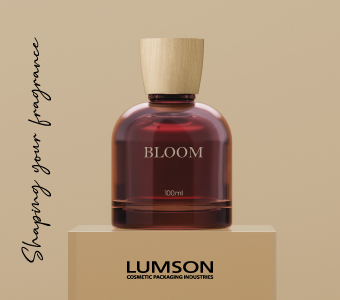Last June, Takasago opened its doors to the press to reveal a range of new products: the series of captive molecules – for its exclusive use – and specialties – designed for the market – was focused on three main principles: green tech, the beauty of purity, and the olfactory signature (long wear, diffusion).
To perfumer Aurélien Guichard, “Green chemistry and ingredient purity have been two major pillars for Takasago since the 1970s. But sometimes, this purity is counterbalanced by a lack of power. By offering materials with more impact, the new palette sharpens perfumers’ creativity.”
Gentle processes for the planet
Takasago’s care for the environment includes synthesizing ingredients both derived from natural resources (biobased) and biodegradable. Pine trees and upcycled materials, which can be obtained by distilling orange, for example, like limonene, make it possible to create biobased molecules with at least 50% of renewable carbon. These include biomuguet, an intense floral and ozonic note which results in a thrush scent that does not fall under IFRA’s restrictions on lyral and lilial.
Other ingredients are derived from white biotechnologies based on the ancestral Japanese expertise in fermentation. Sugar cane is transformed into aromatic molecules thanks to enzymes like yeast and bacteria. This highly environmentally friendly, energy-efficient process does not require petroleum derivatives. A result of this technique, biocyclamol offers a long-lasting, rose floral note whose freshness and transparency add a modern touch to thrush.
Minimalism and purity
Takasago’s creativity is also guided by the Shibui aesthetics, i.e. the beauty of purity: a minimalist creative style for simple formulas with fewer ingredients, since they are purer and have more impact. That is where the secret of Takasago’s expertise lies: creating pure materials thanks to chiral chemistry. This process, which won a Nobel Prize in 2001, is aimed to replicate a biobased or natural fragrant body in its purest state. This technique offloads the ingredient from its roughness to only keep the most interesting part, olfactory-wise, and the closest to nature. That is how they obtained L-Citronellyl Acetate (84% of natural origin), a complex, faceted, addictive note with fruity, floral, metallic hints.
The other innovation concerns the creation of CX ingredients, purified versions of already-known molecules. Originally in the form of crystals, these materials undergo a second crystallization aimed to beautify them. Stripped of their least refined facets, they reveal new olfactory undertones. Ambroxan CX, the purified version of this very popular amber wood, puts an emphasis on mineral and animal tones with an intensity which makes it even more addictive.
Design & Signature
The third creative principle of this new palette is the creation of concise formulas with ingredients with more impact. Synthesis is no longer about mimicking nature, it is about exceeding limits. Cutting-edge technologies help obtain materials which offer higher performances in terms of long wear and trail, as well as molecules with innovative facets. The latter are a real breath of fresh air for perfumers, who draw creative ideas from them. Pamplefix, a captive molecule whose freshness reveals an astonishing persistence, given the category (green, citrus), perfectly combines with woody notes. In addition, these molecules do not necessarily fall under restrictive regulations, for example if iconic materials are replaced. Sakura Salicylate, a soft floral note, can replace the benzyl salicylates recently limited by IFRA, to create a solar scent.
All in all, about fifteen ingredients were created to offer perfumers a new playground. This palette results from a long development process, since it takes at least five years, starting from the discovery of a molecule, to assess it, possibly industrialize it, and register it. Among several thousand proposals, only a few get through all the validation steps. This long, hard work should eventually be completed with the expertise of neurosciences to measure the emotional and holistic impact of the molecules on consumers.







































